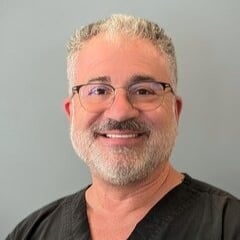For decades, avascular necrosis (AVN) of the femoral head was regarded as a degenerative inevitability— a journey from discomfort to destruction, culminating in the operating room. I have spent many years challenging that assumption. Through clinical research and patient care, I have witnessed how hyperbaric oxygen therapy (HBOT) has evolved from an adjunctive wound care tool into a scientifically grounded regenerative intervention capable of restoring viability and structure to bone once written off as “dead.”
Understanding the Root Cause of AVN
At its foundation, AVN is a vascular catastrophe. When the microcirculation to the femoral head collapses, bone cells lose their oxygen supply and asphyxiate. Structural failure follows, driven by hypoxia-induced necrosis. Traditional orthopedic approaches—core decompression, grafting, and ultimately total hip arthroplasty—treat the aftermath of ischemia but not its cause.
How HBOT Helps
HBOT directly addresses this oxygen deficit. Inside the pressurized chamber, patients breathe 100% oxygen, dissolving it into plasma at concentrations up to twenty times greater than normal atmospheric levels. This oxygen saturation enables diffusion into ischemic tissue, reenergizing osteoblasts, stimulating angiogenesis, and reactivating dormant repair pathways.
These effects are not theoretical. Imaging and clinical studies, including long-term MRI follow-ups, have shown stabilization and even reversal of necrotic lesions after HBOT. Bone marrow edema diminishes, osteolysis halts, and many patients experience meaningful improvements in pain and mobility—often avoiding surgery altogether. HBOT doesn’t merely preserve bone integrity; it helps rejuvenate it.
Clinical Experience and Research
As National Medical Director of Hyperbaric Medical Solutions, I frequently integrate HBOT into orthopedic care. In my 2020 study, HBOT demonstrated the ability to reactivate the metabolic balance governing bone formation and resorption through renewed osteoblast and osteoclast activity. The implications extend beyond AVN: HBOT serves as a biologic modulator capable of reversing skeletal degeneration by restoring oxygen-dependent homeostasis.
Synergy with Orthobiologic Therapies
The future of regenerative orthopedics lies in synergy. HBOT’s effects are amplified when combined with biologic therapies such as platelet-rich plasma (PRP), stem cells, or exosomes. The oxygen-enriched environment enhances cellular viability, catalyzes growth factor activity, and optimizes exosome signaling—critical steps for sustained tissue regeneration.
Even emerging peptides such as BPC-157, known for their angiogenic and cytoprotective properties, complement HBOT protocols by supporting microvascular recovery and cellular repair. Together, oxygen and biologics transform the hyperbaric chamber into a dynamic environment for skeletal healing.
Preserving What Nature Built
What distinguishes HBOT from surgical intervention is its respect for the body’s architecture. Surgery removes or replaces what has failed; HBOT revitalizes what nature built. It preserves native bone, restores capillary flow, and reignites intrinsic repair mechanisms. For early- and mid-stage AVN, this represents genuine hope for healing without replacement parts.
Decades of evidence—including studies with multi-year follow-up—confirm HBOT’s capacity to halt disease progression and sustain long-term pain-free outcomes. It’s not alternative medicine; it’s precision molecular therapy, powered by oxygen.
Redefining What’s Possible
I’ve shared these insights globally—from the Undersea and Hyperbaric Medical Society (UHMS) to the Yale New Haven Health and Bridgeport Hospital Wound Science Symposium. Across these platforms, my message remains consistent: HBOT changes physiology.
AVN is not an irreversible condition. It is a metabolic and microvascular disorder shaped by hypoxia, and thus inherently responsive to intervention that restores oxygen dynamics. When identified and treated early, the hip need not be lost.
Conclusion
In regenerative orthopedics, oxygen is not auxiliary—it is foundational. HBOT exemplifies this principle, bridging wound physiology, cellular metabolism, and orthopedic restoration. When combined with biologic support and evidence-based timing, we move beyond symptom management toward genuine healing.
I’ve seen patients reclaim function, reverse necrosis, and restore bone integrity because we respected the body’s natural mechanisms for repair. The surgical suite will always have its place, but for many facing AVN, the hyperbaric chamber has become the first environment of revival—not of surrender, but of hope renewed.
Learn More About HBOT for AVN
Hyperbaric Oxygen Therapy (HBOT) offers a regenerative, non-surgical path for patients diagnosed with avascular necrosis — targeting the underlying oxygen deficit that drives bone collapse. If you or someone you know has been diagnosed with AVN, early evaluation is key to preserving joint integrity and function.
Request a ConsultationReferences
- Katz A, Singh G, Thomson K. Effectiveness of Hyperbaric Oxygen Therapy for Treatment of Postmenopausal Osteoporosis. Int. J. Adv. Res. 2020.
- Undersea and Hyperbaric Medicine Journal. Avascular Necrosis Evaluation and HBOT. 2020.
- Camporesi EM et al. Hyperbaric Oxygen Therapy in Femoral Head Necrosis. J Arthroplasty. 2010.
- Yale Medicine. How Hyperbaric Oxygen Helps Treat Avascular Necrosis. 2023.
- PubMed Central. The Use of Hyperbaric Oxygen for Avascular Necrosis of the Femoral Head. 2024.
- ACEP. Announcing HBO’s Newest Indication: Avascular Necrosis. 2024.
- Zhang S et al. Hyperbaric Oxygen Combined with Exosomes for Tissue Repair. Frontiers in Bioengineering and Biotechnology. 2025.
- PMC. Emerging Use of BPC-157 in Orthopedic Sports Medicine. 2025. (contextual)


.png?width=800&height=800&name=Avascular%20Necrosis%20(AVN).png)


